What's the Eco-Impact of Your Everyday Choices?
Which is greener, printed books or e-Readers? Plastic wrap or aluminum foil? The answers will surprise you.
By Rachel Z. Arndt
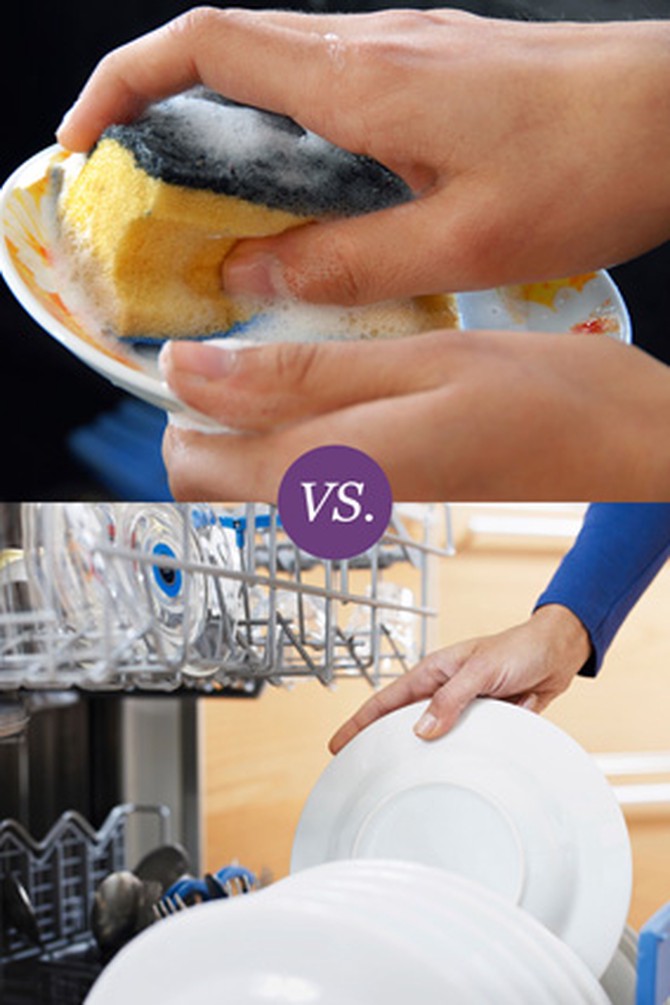
Photo: Thinkstock
Washing by Hand vs. Dishwasher
Assumption
Laboring at the sink with a sponge must be better than using that energy guzzler under the counter.
Reality Check
A dishwasher is something most folks are not—incredibly efficient. It can save up to 5,000 gallons of water per year compared with scrubbing by hand. That's because it uses roughly five gallons per load, about one-fifth the amount most people use at the sink. And when less water is needed, your home's hot-water heater uses less energy.
Just make sure you don't prerinse, which can squander an extra 20 gallons of water; don't run the machine with only a few dishes inside; and skip settings—like heat-dry or rinse-hold—that are stronger than necessary.
Go Greener
Look for phosphate-free detergent brands. The chemical can spread from wastewater and wreak havoc on lakes and streams, stimulating algae growth that deprives other aquatic plants and animals of oxygen.
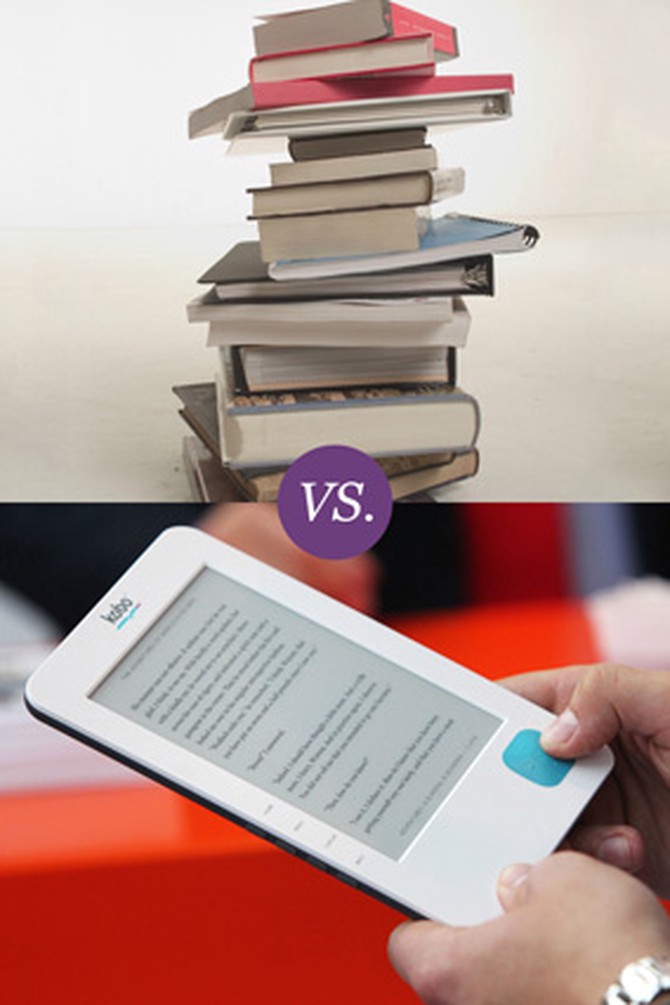
Photo: Thinkstock (top), Getty Images (bottom)
Printed Book vs. E-reader
Assumption
Because it's estimated that making one Kindle creates 22 times more greenhouse-gas emissions than producing a book, e-readers are eco-disasters.
Reality Check
The more you read, the more it makes sense to curl up with an e-reader. Though producing a single device takes a greater toll than making one book, you can download indefinitely. According to one study, once you read 23 books, the environmental hit of a Kindle is the same as the print version; download more and your e-reader trumps books. Of course, using it requires energy, but its energy-efficient screen needs less juice than most electronics. And downloading a new book takes only a few clicks, while buying a printed book means driving to a bookstore or having it shipped to you.
Go Greener
Unplug your charger when it's not in use so it doesn't suck extra energy. When you upgrade, recycle your e-reader at Amazon or Best Buy.
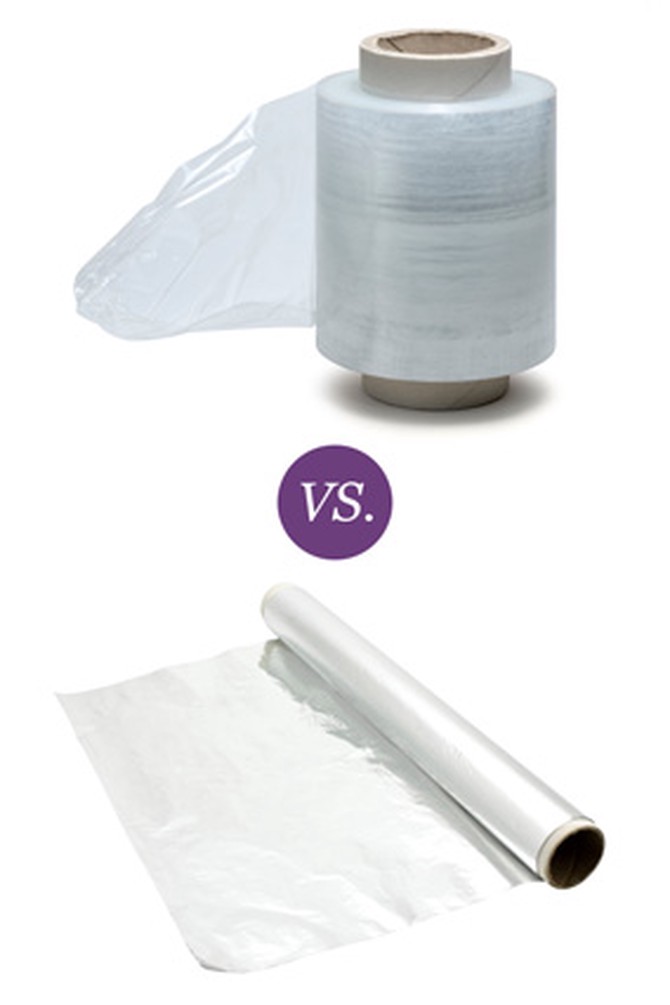
Photo: Thinkstock
Plastic Wrap vs. Aluminum Foil
Assumption
Plastic is Earth's kryptonite; anything, including foil, must be better.
Reality Check
Experts estimate that plastic hangs around landfills for up to 1,000 years; aluminum foil, 500. Yet plastic wrap is the better choice per use. Because aluminum foil manufacturing is so complex, starting with bauxite ore mining, it's more energy-intensive and emissions-heavy. Making a square foot of plastic wrap uses about 30 percent as much energy and produces about one-tenth as many emissions as making foil. If you're a die-hard foil fan, make its eco-impact more comparable to plastic wrap by reusing the same piece four times.
Go Greener
When you can, skip both and opt for reusable glass containers.
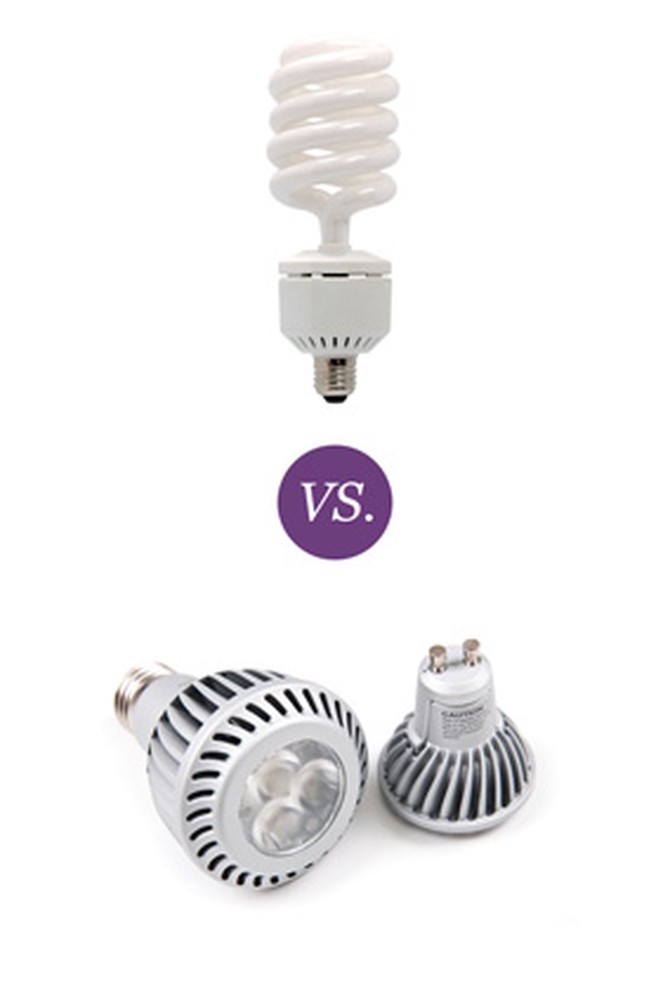
Photo: Thinkstock
CFL Bulbs vs. LED Bulbs
Assumption
This January federal efficiency standards will essentially outlaw classic incandescent bulbs; any alternative must be a brighter idea.
Reality Check
All eco-bulbs are not created equal. Compact fluorescent lights are up to five times more efficient than incandescents, but they contain mercury, which can make them harder to recycle and in some states illegal to trash. Light-emitting diodes (LEDs), by contrast, can go at least 25,000 hours before flickering out—about three times longer than CFLs—which means, hour for hour, they require a sliver as much energy to produce. LEDs contain no mercury, and—mood-lighting fans, rejoice!—they cast a warmer glow.
Go Greener
When swapping outdoor lights for LEDs, choose motion-sensing models; doing so cuts energy use even further.
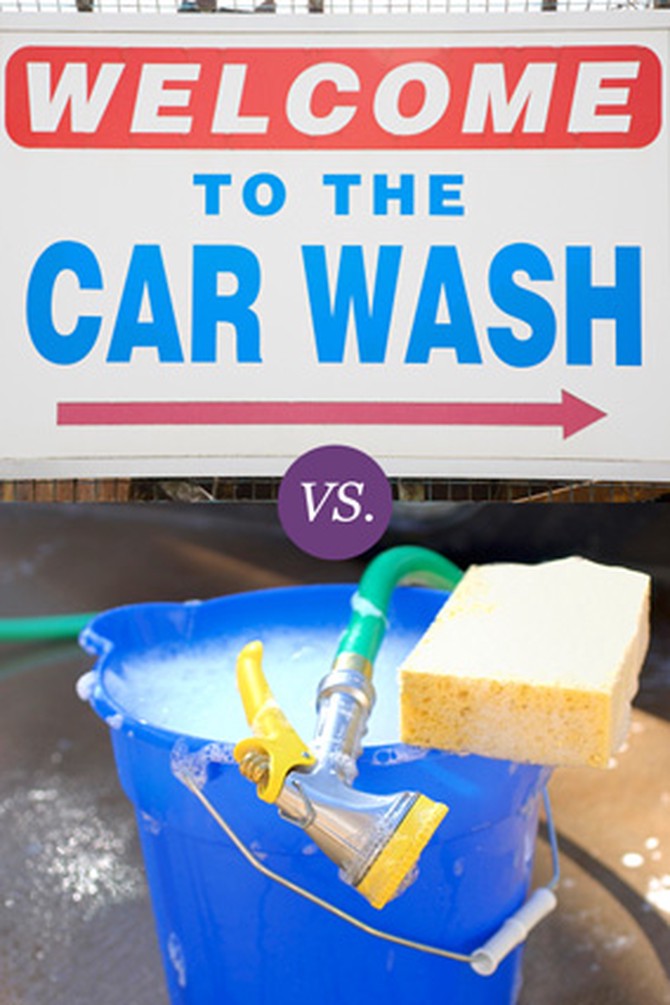
Photo: Getty Images (top), Thinkstock (bottom)
Car Wash vs. Driveway, Hose, and Bucket
Assumption
Elbow grease is more virtuous than a mechanical scrubdown.
Reality Check
A DIY wash may show your wheels some love; the environment, not so much. And water use—about 100 gallons per ten minutes of home washing, 45 gallons total for a pro car wash—isn't the only factor to consider. At home the motor oil, gasoline, and other chemical grit that's gunking up your car's underbelly can run off into sewer drains, which empty into waterways, potentially suffocating fish. Car washes, by contrast, have to follow wastewater regulations, so the water is filtered and cleaned before it reaches streams and ponds.
Go Greener
Try new car wash products like Eco Touch Waterless Car Wash.
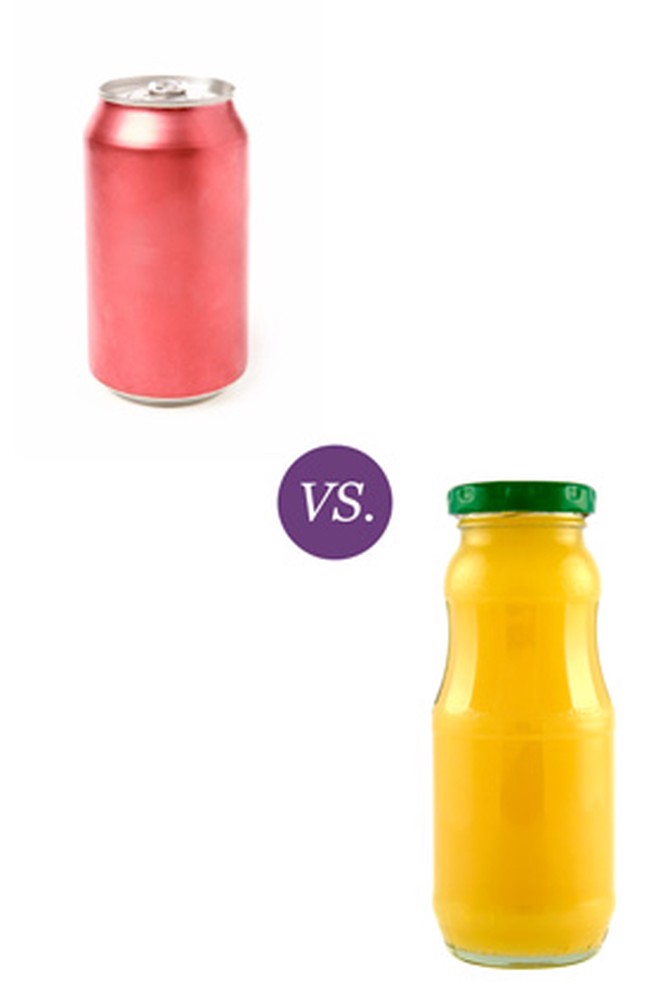
Photo: Thinkstock
Aluminum Cans vs. Glass Bottles
Assumption
Because aluminum manufacturing is so taxing, glass bottles should be your drink container of choice.
Reality Check
Making cans is still less arduous than making glass bottles. Plus, aluminum wins big in shipping: An empty 12-ounce can weighs up to 14 times less than a 12-ounce glass bottle; less weight means less fuel and fewer emissions in transport. And after the drink's been consumed, aluminum wins again: Recycling ten pounds of aluminum can save 37 pounds of carbon emissions, compared with one pound saved through glass recycling. The verdict: six-pack ahoy!
Go Greener
If you're a soft-drink lover, consider the SodaStream. The home sodamaker uses reusable canisters of CO2.
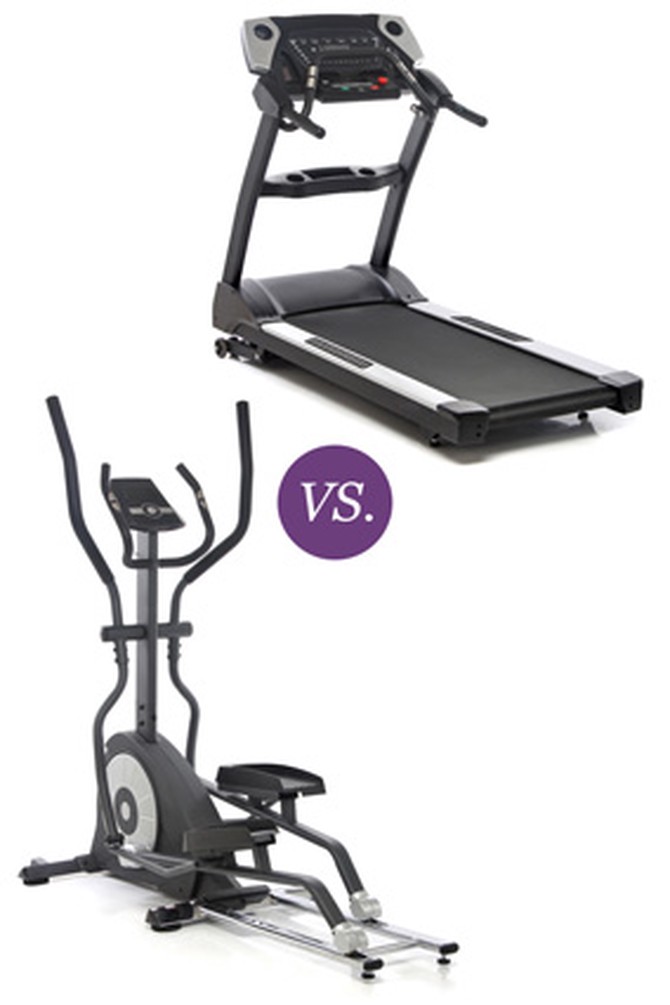
Photo: Thinkstock
Treadmill vs. Elliptical
Assumption
No difference. At the gym, a machine is a machine is a machine.
Reality Check
If elliptical machines are the triathletes of the workout room, treadmills are the Jabba the Hutts. A 220-pound person can use up to 787 watts of power on the treadmill, according to a test done by equipment giant Life Fitness. That's like turning on eight 100-watt incandescent bulbs for the length of the workout. Many ellipticals, on the other hand, rely on magnets, not electricity, for resistance; your hard work is all that's required to power up the machine's LED displays.
Go Greener
Skip the lights, TV, and air-conditioning altogether, and go for a walk or run outside.
From the September 2011 issue of O, The Oprah Magazine

